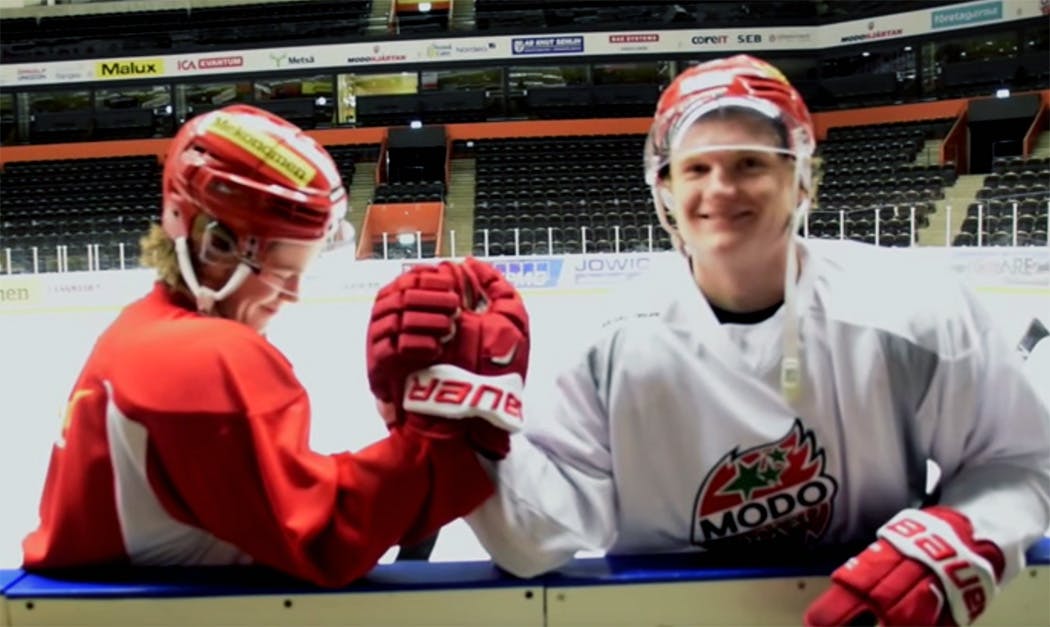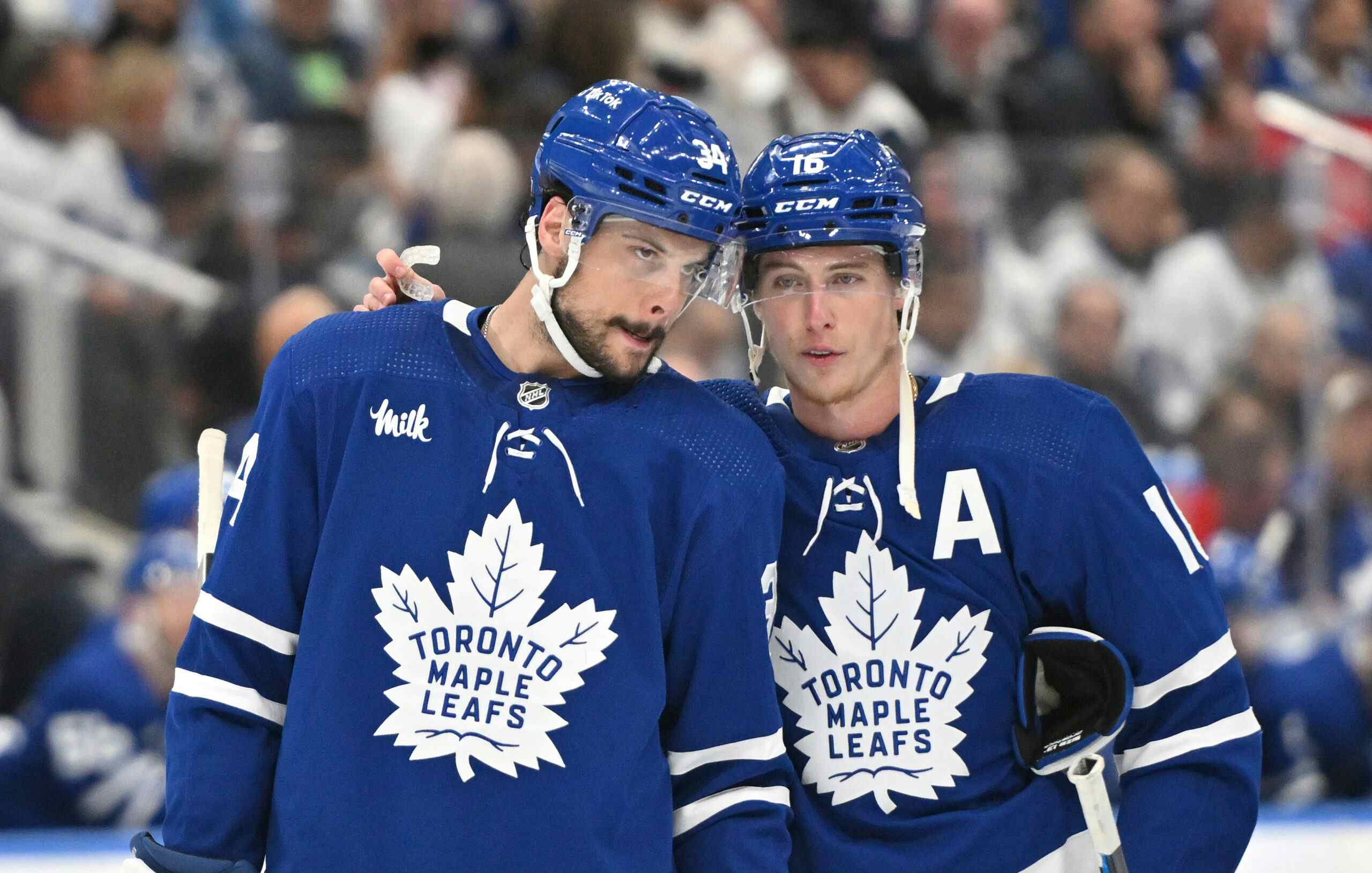Jesper Lindgren signs multi-year deal in Finland, spreading the Leafs’ developmental roots

We’re probably a little bit late to the punch in talking about this, but yesterday, Toronto Maple Leafs prospect Jesper Lindgren left Sweden to begin a new chapter in his hockey career… with Liiga squad HPK Hamneenlinna. A rough translation of their official press release is as follows:
HPK and defenceman Jesper Lindgren have agreed to terms on a two-year contract. Thet 20-year-old Swedish defenceman arrives at HPK from Modo, having finished a 50 game season with 3 goals, 21 assists, and 24 points. A right-handed shot, Lindgren was selected by the Toronto Maple Leafs in the 2015 draft and has played for the Swedish junior national teams in all age groups since U17. Lindgren made his SHL debut at 17 years old.
The Finnish franchise is delighted to have him. “Jesper is well suited to our plans,” said HPK head coach Antti Pennanen in the press release. “As a potential top player in the future, he fits into our player development strategy. As well, he is a fast-paced player, which is what HPK values in players currently and in the future.”
Those aware of where things stand in European hockey will be quick to tell you that this is a positive career move for Lindgren. Modo, to put it lightly, are not the powerhouse we all remember them being described as when we were younger; they’ve been dealing with financial issues for the past several years and that’s become noticeable in the on-ice product. After a steady decline throughout the decade, the team was finally relegated in 2015/16 to Allsvenskan, and in their first season there, finished in third-last with a 23-25-2-2 losing record.
Lindgren, for what it’s worth, was spectacular, putting up 24 points in 50 games in his second full season in a Top-2 Swedish league. Historically, those who score with quantity in Allsvenskan at a young age have proven to have a decent shot of making the NHL, but there’s no denying that the club of choice doesn’t afford him much opportunity. The Leafs have known this for a long time, which is part of the reason why they recalled William Nylander to the Marlies midway through the 2014/15 season to begin his North American career.
Now, his new squad aren’t exactly dominating Finland either. But they have been getting better; HPK just came off of their best Liiga season since 2006/07, finishing with a 35-20-2-3 record that placed them 5th of 15 teams. That’s an impressive turnaround for a team that was third-last the year prior and is in need of a youth injection, and that’s exactly what they’ll be looking to get in Lindgren. His 24 points would’ve made him HPK’s third-most productive defenceman this year, and while Allsvenskan and Liiga are on different tiers, it’s not a gap that an age curve won’t smooth out. It would be in no way surprising to see Lindgren earn himself top-pairing minutes on a regular basis at some point next season.
Failed to load video.
That’s exactly what the Leafs will want out of him as he works towards his next step.
I talked the other day about how the Leafs are going to have to make some tough decisions with unsigned prospects, but how that’s a testament to the depth that the organization now has in their prospect pool. We’re going to use that train of thought for a bit in Lindgren’s case to make a point.
Why? Well, many are sad to see that he won’t end up playing with the Marlies. After all, he flew over when his season was over, signed an Amateur Tryout, didn’t get into any games, then signed a multi-year contract upon re-crossing the ocean. Many had hoped that he’d be on the Marlies next year, given that he’s a right-handed shot, an area where the Leafs and Marlies have a perceived weakness right now.
All the same, adding Lindgren to the mix likely pushes out an already locally-rooted leftie who is willing to switch sides. Drop him into the Marlies, maybe you jeopardize Calle Rosen, Andreas Borgman, or Rinat Valiev’s ice time. By letting him play in another league, the Leafs can now let two middle tier prospects get the ice time that they need to have a shot at succeeding instead of just one, further increasing their odds of getting a regular NHL player out of their pool.
This can be applied to the other Swedish players who came over down the stretch and headed back home, like Pierre Engvall and AHL playoff standout Carl Grundstrom. Sure, they’d have a real shot at beating someone out for a roster spot, but when the wings are already loaded to the point where legitimate NHL prospects may have to hang out in the ECHL until injuries start creating roster spots, why push more players into one corner of the pool?
Until more team-run options for development become available, the Leafs should be extremely willing to spread out their players to venues that they trust to cultivate them, and it doesn’t take a genius to see that the process is happening.
Take last year’s draft after Auston Matthews for example; Toronto drafted two college-bound players who had yet to start their freshman year (Woll & Greenway), and three players that they could comfortably leave in Europe (Korshkov, Grundstrom, Chebykin) to play top-level hockey for a while. This defers the need for entry-level contracts, and the need to foster them once they turn 20 years old. They left two AHL-eligible over-agers in major junior for a year (Brooks & Walker), allowed a third of them to attempt to play in Europe to start the year (Bobylev). Keaton Middleton probably isn’t getting an ELC anytime soon.
While it’s not the ideal group I would’ve gone with, there’s no denying that the Leafs ended up drafting a class that minimized both contract risk and AHL bottlenecking. It wouldn’t shock me if we saw similar this year, with any-league-goes occurring once either the team starts making quantity-for-quality moves or they find a sensible way to reach beyond the Marlies for top-quality North American Pro Development, be it the growth of the ECHL or simply loaning out players to other teams.
To bring that all back to Lindgren, “losing” him for two years seems right in line. When he’s done this contract in Liiga, he’ll be 22-years-old; ripe to either slot into the Leafs lineup as depth once the first cap-contender shuffle moves begin to happen, or at the very least, be a top AHL defenceman for a year to groom himself. In the meantime, he doesn’t push a deserving peer into the press box or even find himself there, and gets an opportunity to be an elite player in a good league.
All things considered, it’s a win-win scenario.
Recent articles from Jeff Veillette





